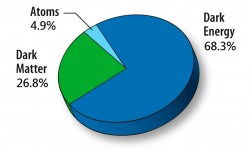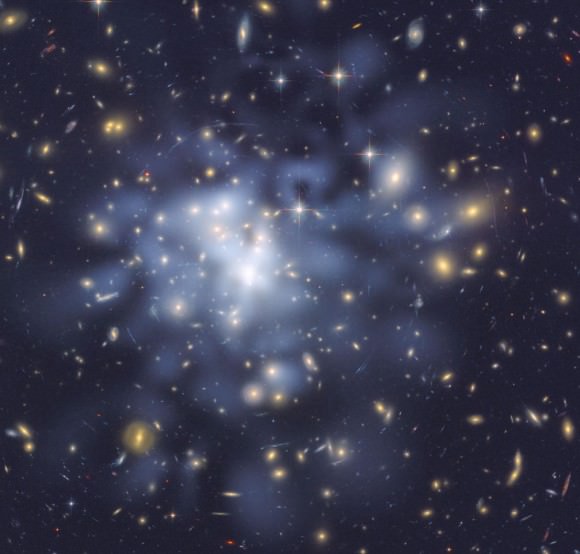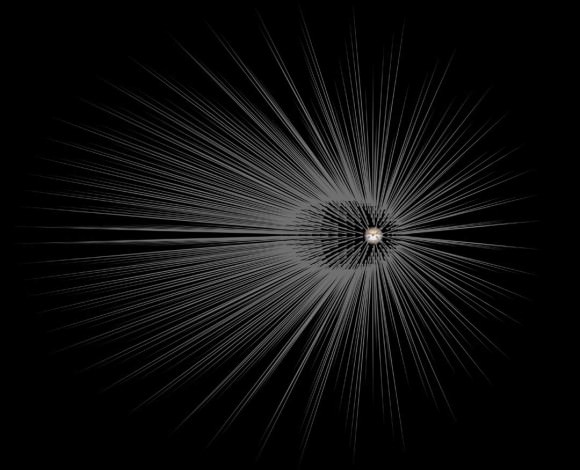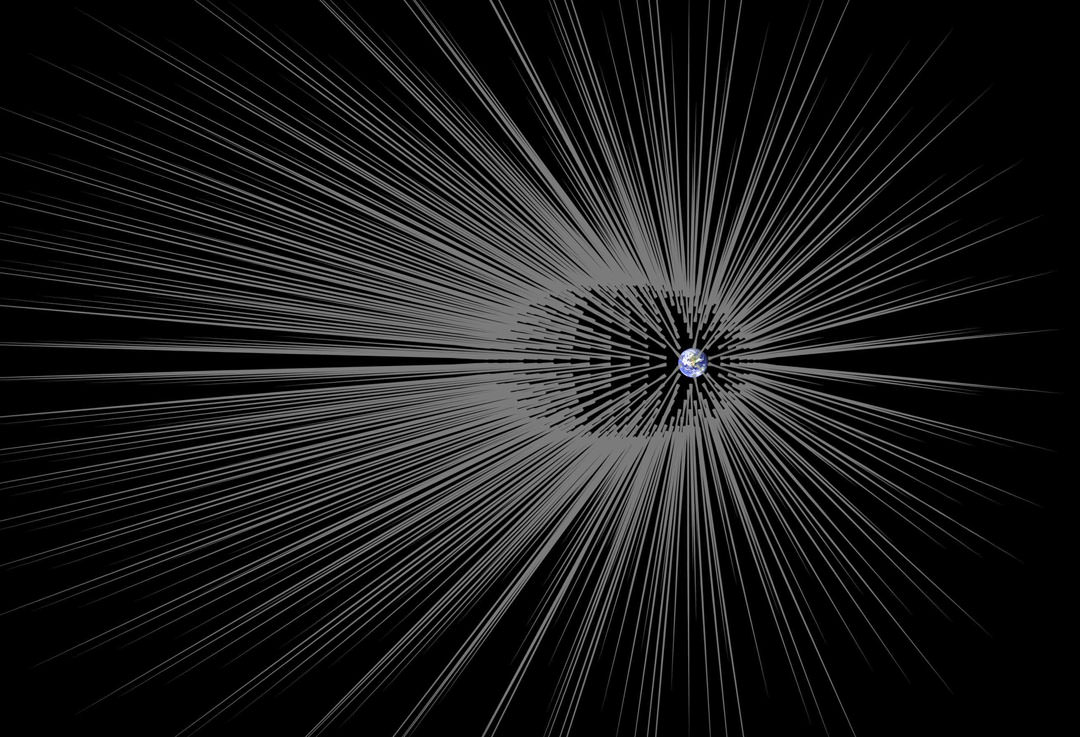I’m losing mine, but the Solar System may be way hairier than we ever thought, with thick crops of filamentary dark matter streaming through Earth’s core and back out again even as you read this.

A new study publishing this week in the Astrophysical Journal by Gary Prézeau of NASA’s Jet Propulsion Laboratory proposes the existence of long filaments of dark matter, or “hairs.” Dark matter is a hypothetical form of matter that emits no light, thereby resisting our attempts to see and photograph it, but based on many observations of its gravitational pull on ordinary matter, astronomers have measured the amount of dark matter to an accuracy of 1%.
Massive amounts of it formed a tangled web of filaments after the Big Bang and ensuing epoch of cosmic inflation that served as sites for the “condensation” of bright matter galaxies. We likely owe our existence to this stuff, whatever it is, which has yet to be directly detected. Along with dark energy, it remains one of the greatest mysteries of our age.

As if that weren’t enough, dark matter comprises 85% of all the known matter reserves in the universe and 27% of the entire matter-energy cosmic budget. Ordinary stuff like stars, baseball bats and sushi constitute just 4.9% of the the total. The leading theory is that dark matter is “cold,” meaning it moves slowly compared to the speed of light, and it’s “dark” because it doesn’t produce or interact with light. The axion, a hypothetical elementary particle, appears to be good candidate for dark matter as do WIMPs or weakly interacting massive particles, but again, these exist only on paper.
According to calculations done in the 1990s and simulations performed in the last decade, dark matter forms “fine-grained streams” of particles that move at the same velocity and orbit galaxies such as ours. Streams can be much larger than our Solar System and criss-cross the galaxy. Prézeau compares the formation of fine-grained streams of dark matter to mixing chocolate and vanilla ice cream. Swirl a scoop of each together a few times and you get a mixed pattern, but you can still see the individual colors.
“When gravity interacts with the cold dark matter gas during galaxy formation, all particles within a stream continue traveling at the same velocity,” Prézeau said.

But a different scenario unfolds when a stream passes by an obstacle like the Earth or a moon. Prézeau used computer simulations to discover that when dark matter stream passes through a planet — dark matter passes right through us unlike ordinary matter — it’s focused into an ultra-dense filament or hair. Not a solo strand but a luxuriant crop bushy as a brewer’s beard.
According to Prézeau, hairs emerging from planets have both “roots,” the densest concentration of dark matter particles in the hair, and “tips,” where the hair ends. When particles of a dark matter stream pass through Earth’s core, they focus at the “root” of a hair, where the density of the particles is about a billion times more than average. The root of such a hair should be around 600,000 miles (1 million km) away from the surface, or a little more than twice as far as the moon. The stream particles that graze Earth’s surface will form the tip of the hair, about twice as far from Earth as the hair’s root.

A stream passing through more massive Jupiter would have roots a trillion times denser than the original stream. Naturally, these dense concentrations would make ideal places to send a probe to study dark matter right here in the neighborhood.
The computer simulations reveal that changes in Earth’s density from inner core to outer core to mantle and crust are reflected in the shape of the hairs, showing up as “kinks” that correspond to transitions from one zone to the next. If it were possible to get our hands on this kind of information, we could use it to map to better map Earth’s interior and even the depth of oceans inside Jupiter’s moon Europa and Saturn’s Enceladus.
Earth getting its roots done. What’ll they think of next?

